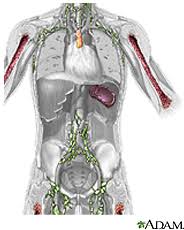 People living with mild to moderate aplastic anemia are in serious condition but do not have to be hospitalized for treatment. With extremely low counts of all types of blood cells, the disease is considered severe and life-threatening that hospitalization for treatment is immediately required.
People living with mild to moderate aplastic anemia are in serious condition but do not have to be hospitalized for treatment. With extremely low counts of all types of blood cells, the disease is considered severe and life-threatening that hospitalization for treatment is immediately required.There are different treatment options recommended for every level of the illness. For the mild to moderate aplastic anemia, blood transfusions and medications are still appropriate choices; but for the severe cases, bone marrow transplants may be the only option. Some of the treatments that will be considered are:
- Blood transfusions
- Immunosuppressants
- Stimulants for the bone marrow
- Bone marrow transplants
- Antibiotics
- Prevention (stop exposure to harmful chemicals like benzene)
Autoimmune disorders can lead to the immune system attacking and damaging blood cells inside the bone marrow. Treatment is in the form of drugs that will suppress or control a hostile immune system. Examples of drugs: anti-thymocyte globulin and cyclosporine.
Stimulants for the bone marrow are drugs that stimulate production of new blood cells in the marrow. Examples are: filgrastim, sagramostim, and epoetin.
Bone marrow transplants promise a permanent cure without recurrence in 1 out of 5 cases.
Antibiotics may help alleviate frequent and life-threatening infections caused by the illness.
Other aplastic anemia treatments like supportive care and prevention may help improve the symptoms. Stop taking the drug that induce the disorder. Avoid exposure to environmental toxins like benzene.
For Further Reading,

